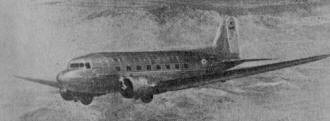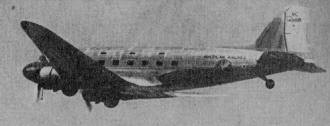 Table of Contents Table of Contents
The Boy Scouts of America has published Boys'
Life since January 1, 1911. I received it for a couple years in the late 1960s while in the
Scouts. I have begun buying copies on eBay to look for useful articles. As time permits, I will be glad
to scan articles for you. All copyrights (if any) are hereby acknowledged. Here are the
Boys' Life issues I have so far.
|
During the late 1930s, commercial
air transportation experienced a significant boom, largely fueled by the introduction
of the Douglas DC-3 in 1935. This aircraft, widely recognized for its efficiency
and reliability, revolutionized air travel, making it more accessible and popular
than ever before. The rapid growth of this sector placed an unprecedented demand
on air traffic control services, as exemplified by the busy operations at Newark,
the world's most active airport at the time. The article from the 1938 issue of
Boys' Life magazine further illustrates this, detailing a trip from Newark
to Pittsburgh, where Air Traffic Control, managed by the Bureau of Air Commerce,
played a critical role in ensuring the safe and orderly movement of a burgeoning
number of flights, underscoring the vital part it played in the golden age of commercial
aviation. Lots of photos are included of control tower planning and operations.
Talking Them In
 Traffic moving at an average of better than
three miles a minute and yet handled with ease and certainty! Traffic so speedy
that seconds count and a minute means a difference of miles in distance! This is
what the Air Traffic Control of the Bureau of Air Commerce has to handle. Let us
make a trip from Newark, New Jersey, the world's busiest airport, to Pittsburgh
and see how Air Traffic Control works! Traffic moving at an average of better than
three miles a minute and yet handled with ease and certainty! Traffic so speedy
that seconds count and a minute means a difference of miles in distance! This is
what the Air Traffic Control of the Bureau of Air Commerce has to handle. Let us
make a trip from Newark, New Jersey, the world's busiest airport, to Pittsburgh
and see how Air Traffic Control works!
We take Trip Six out of Newark for Pittsburgh. Our pilot reports to Air Traffic
Control that he will leave at 10:00 A.M., climb to an altitude of 9,000 feet and
cross the control point on the airway of Martins Creek, Pa., at 10:55 A.M. He will
continue and reach Sunbury, Pa., at 11:26 A.M. at 9,000 feet. From there the next
control point is Bellefonte, Pa. We will pass that at 11:41 A. M. at 9,000 feet.
Then Buckstown, Pa., at 11:58 A.M. But, here we will be only about twenty-two minutes
out of Pittsburgh. We have some 9,000 feet of altitude to lose. Our pilot plans
to start down and he will cross the control at 5,000 feet.
Air Traffic Control checks the flight plan against traffic on the airway and
finds that it will not interfere with other aircraft or run too close to them so
our plan is approved and we are "cleared." So off we fly and watch how Air Traffic
Control guards us from the moment of departure until we have safely taxied to a
standstill at our destination.

Slowly circling at 6,000 feet over Martins Creek waiting its
turn.

9,000 feet up over Princeton, N. J.; and waiting to be "talked
in."
We arrive at Pittsburgh in clear weather and so are allowed to proceed directly
into the field area. But in thick and stormy weather the real test of Air Traffic
Control comes. Then, in order that several huge air transports with their loads
of human lives will not be churning around a common center at an airport the Air
Traffic Control assigns them definite places and altitudes at which to circle until
the approach to the field is clear of traffic. In the New York area planes from
the South are held over Princeton, N. J., at different altitudes; from the West
they are held over Martins Creek. When the traffic clears they are brought in according
to when they arrived and so accidents and bad collisions are avoided. At times Newark
has some five hundred planes to control during the course of the twenty-four hours!
There are over one hundred and thirty-two scheduled flights daily. Uncle Sam's Aerial
Traffic Cops keep this huge volume of air traffic from becoming snarled, preventing
accidents.
|



